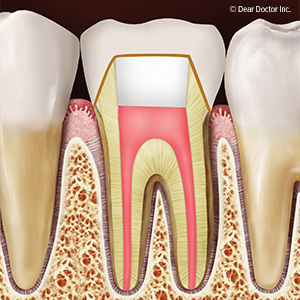How a Root Canal Can Save your Tooth

Root canal treatment (nerve extraction), ie endodontic therapy, is among the most unpopular dental interventions, probably because the name itself is already associated with something very painful according to Millbrook Dentist. However, in reality, it is generally not a painful procedure because today, as a rule, it is performed under local anesthesia, and most people who have undergone endodontic therapy describe their experience similar to that of dental fillings.
What does endodontic therapy mean?
Endodontic therapy refers to the treatment of the inside of the tooth, ie. to the part of the tooth in which the dental pulp is located. To most people, dental pulp is known as the “dental nerve”, but in addition to nerves, it contains blood and lymph vessels, connective tissue and many cells.
Although teeth are mostly made of hard structures such as enamel, dentin and cementum, there is a hollow space in each tooth which, if the tooth is healthy, contains soft tissue – dental pulp (hereinafter “dental nerve”). In the dental office you can meet the following terms that refer to the space in which the “dental nerve” is located:
What is the function of the “dental nerve”?
If we were to say that the function of the “dental nerve” is of irreplaceable importance for the health and functioning of the teeth, we would not be right. This tissue plays a very important role in the growth and development of the tooth, but once the tooth erupts and completes its development, the most manifested function of the dental nerve is sensory function, ie the ability of the tooth to react to stimuli such as hot or cold.
In relation to everyday events in the mouth, this information provided by the teeth about the reaction to stimuli is somewhat important because it indicates that something is wrong and that you should seek the help of a dentist. Basically, if the dental nerve is present and healthy, it is great and should be kept, but if it is removed with well-conducted endodontic therapy, it is also good, because you will not even feel that you do not have it, and the tooth will continue its function as and until then.
What is the purpose of root canal treatment?
The goal of endodontic therapy is to achieve a state in which the tissues surrounding the root of the tooth will remain healthy despite the fact that the “dental nerve” has undergone degenerative changes. In this particular case, it is meant that the tissues surrounding the tooth root are not exposed to bacterial infection and / or irritating substances acting from the hollow space where the “dental nerve” used to be, and are exposed after its decay or inadequate removal.






